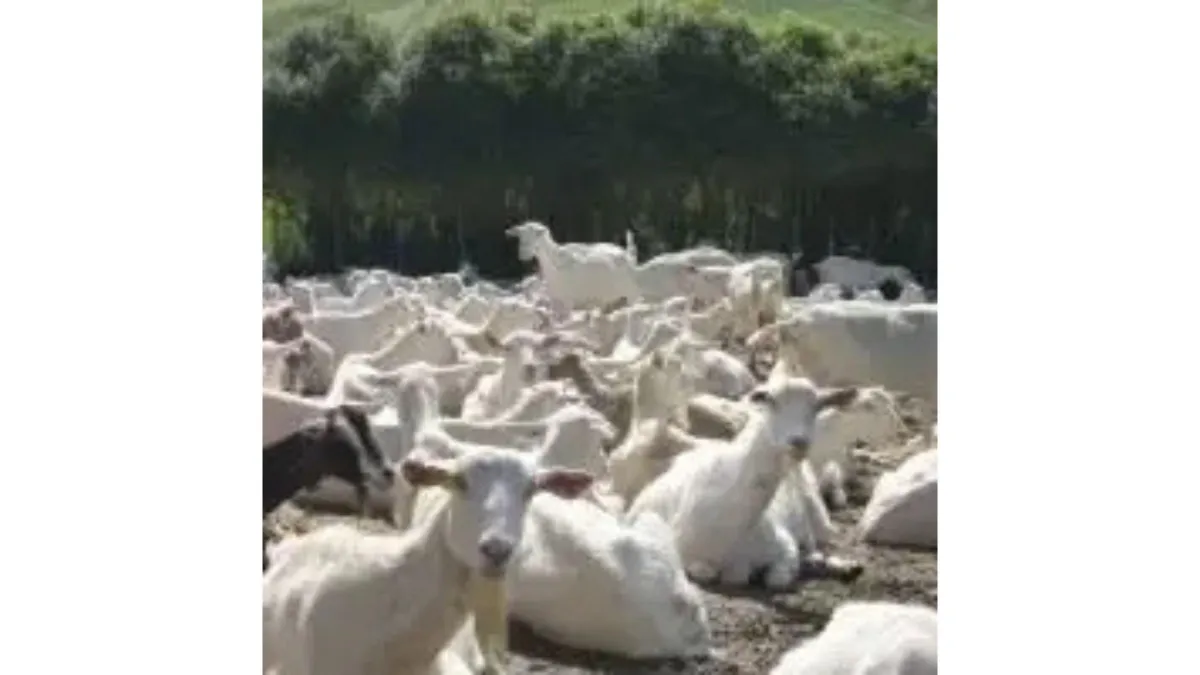
Dairy goats: Not for the faint hearted
If you are thinking of getting goats, then you need to be well prepared. But in saying that, don’t leave the gate open so that they get into your garden. Or even worse, your neighbours!!
They are the loveliest animals that I have ever owned. I started breeding Alpine dairy goats 25 years ago, when a friend, to her horror, got a black and white doe kid from her Saanen doe. (We think the Alpine buck from next door paid a visit.)
Alpines were introduced into New Zealand in 1956. The original doe appeared in the UK in 1908, with distinctive black with the white facial markings.
I continued breeding up with HR bucks (purebred), showing at A &P shows, and learning as much as I could.
If you are thinking of getting goats, then you need to be well prepared.
Good fencing with electric hot wire, a good house or shed for shelter that is draught-proof. Enough space for them as they are not sheep who graze, but browse the pasture. NEVER tether a goat, as this is the cruelest thing you can do to them. Goats need plenty of roughage in the form of good hay, goat mix, and maze /barley to keep their rumen working properly. This you can get from your farm store.
I feed goat mix with a Lucerne meadow mix chaff. Always introduce grains slowly, if they are not used to them when you get them home. Ask the owner what they are feeding them. Access to clean water is important. If they do get a stomach upset, drench them with baking soda and water, or bloat aid from your farm store. Ring the vet if you are unsure.
They need their feet trimmed every 6 -8 weeks. They will also need worming and lice treatment too. I tend to drench them every spring and autumn, or if using natural homeopathic remedies, more often. Also after kidding as this is the most venerable time for the doe and worms to attack. Of course, there is a withholding period for the milk. I freeze it and feed it to the kids later. Cross grazing helps with worms too. I use cattle for this, putting the goats through a paddock first and then the cows.
Goats need a good length of grass like cows.
Barbers pool worm is a real problem, mostly in summer. It’s a worm that is attached to the lining of the gut and sucks blood. Making the goat anaemic with white eyelids and gums. Drench immediately. I drench morning and night for this. You need to hit it hard. It will take a while for the animal to recover, as they have to build up the red blood cells again.
Contrary to popular belief, goats don’t eat tin cans and your washing. Willow and poplar are excellent for goats. Many plants are poisonous to goats. Potato leaves and tubers, rhubarb leaves, pruning’s form plum and stone fruit trees, (Apple and pears are ok) Oleanders will kill them. Daphne bushes and new bracken fern. If in dought don’t feed it.
The rear breeds in New Zealand are Alpine/ British Alpine (purebred) Saanen, Toggenburg, and Anglo Nubian. Which all originated from Switzerland except the Anglo Nubian that came from the Middle East.
Saanen does give the most milk, Alpine is taller and has a bigger frame. Giving a bit less. I get 7 litres a day from my Saanen doe, the Alpines about 4-5 litres. Of course to start with she is feeding the kids as well, which are weaned at about 4 months. Then you will have all the milk. It depends on how much milk to want. I make cheese and have used it for pet lambs and the chooks love it to make into curd. I sell my does for $200 -$250 Bucks $300 approx.
Dairy goats can be seen at most A&P shows, so this is a good place to talk to the breeders.
The rare breed NZ site is a good place to find out about the rare breeds in NZ.
There are Facebook sites for discussion on a goat, which have good information.
If you are well informed and prepared, you will love having dairy goats, they have given me untold pleasure and the opportunity to make friends with other breeds.
Go for it!!!!
Maureen Skilton, Central Hawkes Bay.

